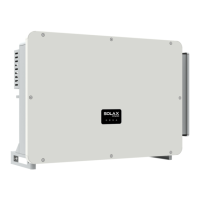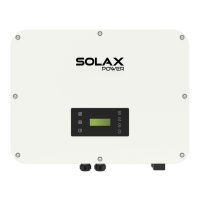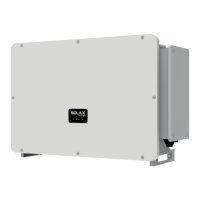29
Product Overview
Feed-in Priority
The feed-in priority mode is suitable for areas
with high feed-in subsidies, but has feed-in power
limitation.
The power of PV will supply the loads first, and
surplus power will feed into the grid, then the
remaining power will charge the battery.
Priority: Loads > Grid > Battery
Backup mode
The back-up mode is suitable for areas with frequent
power outages.
This mode will maintain the battery capacity at
relatively high level, to ensure that the emergency
loads can be used when the grid is off. Same working
logic with “Self-use” mode.
Priority: Loads > Battery > Grid
* For the above three work modes, when the power of PV is insufficient to supply the
loads, the battery will supply the loads. If the battery is insufficient, then the grid will supply
the loads.
Manual: This work mode is for the after-sales team to do after-sales maintenance.
For off-grid status, there is only one work mode: EPS (Off-grid).
EPS (Off-grid)
In case of power failure, the system will supply EPS
loads through PV and battery. ((The battery must be
installed. And the EPS loads must be less than the
minimum of the following two values: the sum of the
maximum battery discharge power and the maximum
PV output power, or the overload limit power of the
inverter.)
The power of PV will charge the loads first, and
surplus power will charge the battery.
Priority: Loads > Battery
* The battery will stop discharging when SoC=min SoC. But due to battery self
consumption, sometimes SoC may < min SoC.
For on-grid status, if the battery SoC ≤ (min SoC-5%), the inverter will take utility energy to
charge battery SoC back to (min SoC+1%).
For off-grid status, if the battery SoC ≤min SoC, the inverter will be unable to enter EPS
mode (the battery will be unable to discharge unless SoC is back to 31%.)

